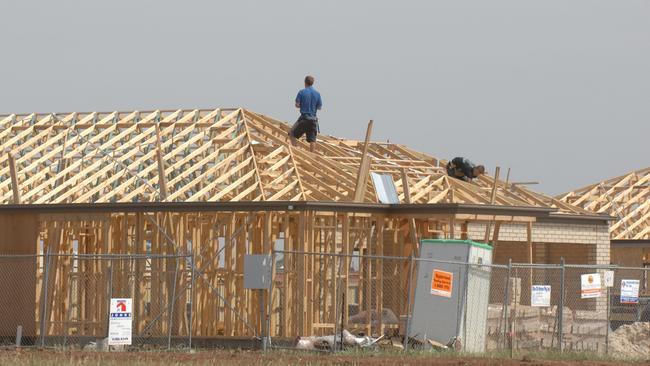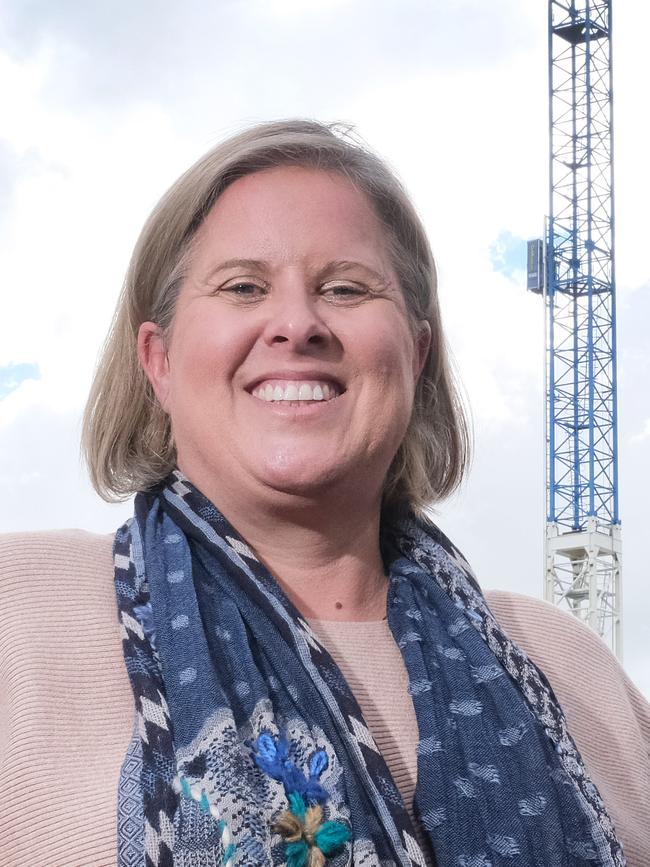Perfect storm to cause Australian home builds to crash
Home building will crash over the next 24 months, well below levels during last year’s construction frenzy, according to updated five-year projections.

Home building will crash over the next 24 months and plunge below the 200,000 annual houses and apartments required to keep up with population growth, as rising interest rates, inflation, supply chain pressures and labour shortages spark a slump in forward sales.
New dwelling starts will not move above 200,000 a year until 2026 and remain well below levels during last year’s construction frenzy, according to updated five-year projections released by Master Builders Australia.
A perfect storm of high interest rates, soaring inflation, building material delays, worker shortages, red tape and lower migration levels have pushed new home builds from nine to 12 months.
Dwelling starts in 2024 will fall to 174,930 – down from 229,790 last year – and are not expected to rise to 210,850 until 2026. The total volume of residential building work is projected to reach $75.1bn within four years, slightly higher than work completed last year.
With inflation expected to peak around 7.75 per cent by the end of the year and the Reserve Bank flagging more interest rate hikes, the building industry is pleading with governments to help avoid lay-offs.

MBA chief executive Denita Wawn – who represents 32,000 members across the $200bn building and construction sector – said the next two years were not “looking good”.
“That is a reflection of a significant slowdown in sales combined with migration simply not getting to the heights that were anticipated post-pandemic,” Ms Wawn told The Australian.
“We know that to meet the housing needs of Australians, even with a slight downturn in migration, we’re going to need to build about 200,000 homes per year to maintain demand.
“You’ll see in those figures that we don’t reach over 200,000 in residential (builds) until 2026. Our concern at the moment and our focus in discussions with governments is around how we stimulate house building to meet those population needs.”
Treasurer Jim Chalmers and Housing Minister Julie Collins are speaking with industry leaders about the crunch and will use the national housing supply and affordability council and Housing Australia to keep tradies in jobs.
Last week Dr Chalmers talked up the role of superannuation funds in helping solve Australia’s “housing supply challenge”.
“We will be working with state governments, local governments, the industry and the superannuation funds to deal with this issue. Our economy is creating jobs for people, but we’re not creating the houses for people to live in, near where they can work. It’s a big challenge,” Dr Chalmers said.
Supply chain issues around building materials are expected to dissipate next year but construction firms are warning that soaring inflation will keep prices high.
While MBA projects 6 per cent growth over the next four years, Ms Wawn said the “biggest unknown at the moment is around labour shortages”.
“A typical house pre-pandemic was taking about nine-months to build. It’s now taking 12 months to build and that is predominantly because of shortages of labour. We don’t think that the supply issues around materials are really going to bring that timeframe back yet because the labour supply issue continues to be acute.
“We’ve got to get residential back up and going and our concern is that if we don’t we’ll be talking about a decline in industry employment.”
This month Home Affairs Minister Clare O’Neil increased the number of permanent migration visas this financial year from 160,000 to 195,000 to help plug labour shortages.








To join the conversation, please log in. Don't have an account? Register
Join the conversation, you are commenting as Logout